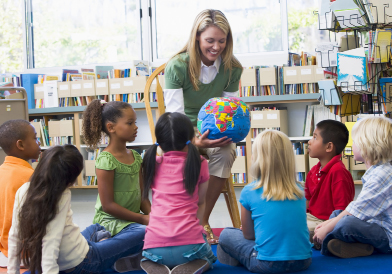Session 2
1. Session 2
1.2. Inquiry 1
Session 2: Respecting Cultural Diversity
Inquiry 1: Considering Culture
Recognizing that Alberta’s population is culturally diverse, and children from diverse backgrounds attend child care programs, it is important for you to consider cultural diversity when preparing to work with children and their families.
Developing knowledge and sensitivities for working with children and families of diverse backgrounds, experiences, beliefs, and desires prepares you as a child care provider. This knowledge also gives you a better appreciation of what children and families bring to child care environments.
What Is Cultural Diversity?

iStockphoto/Thinkstock
People can be diverse in some of the following ways:
- race
- gender
- lifestyle
- age
- occupation
- sexual orientation
- spirituality and religion
- ethnicity
- special needs and abilities
- language
- income level
It is important to realize how each person’s cultural understandings (including your own) shape her or his perspectives, motivations, desires, beliefs, and so on.
Why Is Cultural Diversity Important?
Cultural diversity provides insight and perspective towards others. Diversity enriches people by providing opportunities to discover, learn, and understand the world they live in. When people are exposed to and participate in a variety of human experiences, their quality of life is improved, they begin to understand who they are, and they become creative problem solvers able to appreciate differences. Growth in understanding diversity makes people stronger and unites them within society.
Self-Awareness of Culture
Being aware of an individual’s cultural identity helps the individual to explore, understand, and value her or his cultural background. When race, ethnicity, social class, gender, age, language, and so on are acknowledged, the individual gains insight into how she or he learns. The individual realizes that she or he has strengths, weaknesses, values, and emotions that are inherent in the individual and based on the individual’s culture.
When people acknowledge and understand their own differences, they relate to and understand the differences in others. They exhibit more understanding and are able to be more considerate when others experience conflict and tensions because they are more comfortable in their own personal dealings with culturally diverse individuals.